
 |
|
|
#1 |
|
All the news that's fit to excerpt
Name: newsie
Location: who knows?
Join Date: Jun 2008 Motorcycle(s): only digital replicas Posts: Too much.
|
[motorcycle.com] - Sena Prism Camera Review + Video
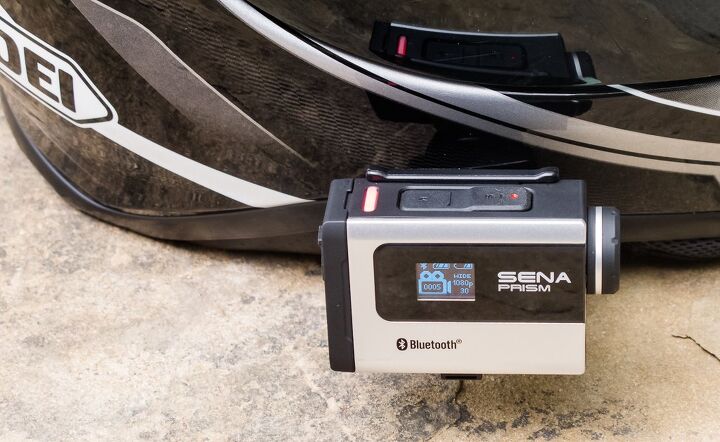 Action cameras have moved beyond their infancy, and much like the shift in language from calling all paper copies Xeroxes, they are no longer referred to by the brand name that made them ubiquitous. Regardless, GoPro remains the 800-lb. gorilla in the action-camera world, making the challenge for every new entry into the market to find a way to differentiate themselves. Sena entered this market late last year with its Prism camera adding to an already impressive line of Bluetooth communication devices. We’ve tested several Sena products and have been impressed with their quality in this quickly developing market. Get the Flash Player to see this player. What initially captured our attention with the Prism was the claim of full integration with Sena’s 20S Bluetooth communications system. With the push of a couple buttons, a 20S owner can start and stop recordings in addition to powering the Prism on and off. These abilities alone would warrant a closer look at the Prism, and they open up a whole range of mounting opportunities for the camera without having to waste battery power and (user-provided) Micro SD card memory by allowing users to only run the camera when it is needed. What really excited the MO staff was the ability to record our narration from our helmet using the 20S systems we already had installed. In the past, we’ve taped microphones into the helmet’s chin bar and carried digital recorders tucked into our jacket pockets to get riding comments. Feature-Packed Sena, being a Bluetooth communications company, leveraged the power of Bluetooth to ease the operation of the Prism. While all of the camera’s features can be accessed through the tiny LED screen on the camera’s side, lots of presses of the two buttons are required to navigate the Prism’s nested menu system. Sena has thoughtfully created a smartphone app (iOS and Android) that delivers full control of the Prism’s settings with ease. The only criticism we have with this method is that the iPhone required going to the Bluetooth settings menu to establish the wireless connection before switching to the app. Sena representatives have confirmed that this is an iPhone-specific issue that does not affect Android phones. 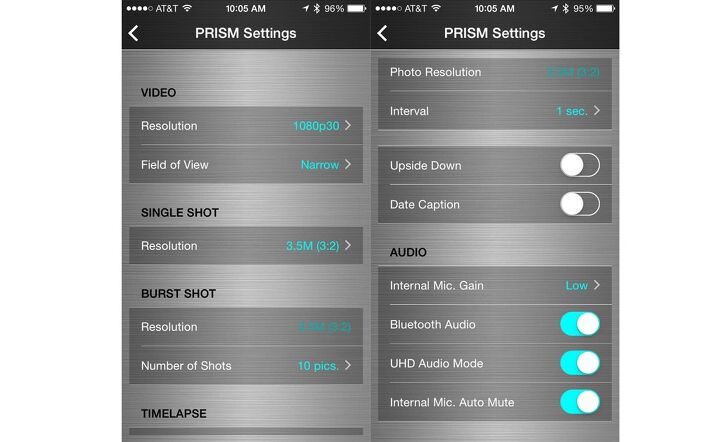 While the ease of wireless setup of the Prism is appreciated, a preview screen to assist in the camera’s framing is regrettably absent. While the ease of wireless setup of the Prism is appreciated, a preview screen to assist in the camera’s framing is regrettably absent.The settings available to the user are many. The camera’s view has two options, wide and medium, both of which are very wide as is typical in for action cameras. The video resolution and frame rate can be adjusted through the range of 1080p 30fps, 720p 30/60fps, and 480p 120fps. The video can even be flipped for the times that the Prism is mounted upside down. Still photos can be captured in formats varying from 3.0 MP to 5.0 MP. The lower resolutions allow for aspect ratios of 3:2, 3:5, and 16:9, while the 5.0 MP setting is restricted to 16:9. Burst shots of 3, 5, and 10 frames are available, as are time-lapse settings of a single frame at 1, 3, 5, 10, 30, and 60 second intervals. Time lapses can be saved as single frames or video files. The Prism’s still photo utility is hampered by the need to either press the button on the unit (which is just about impossible when riding) or holding a button on a paired headset for 1 second. The Prism’s Bluetooth connection to a helmet communicator – and to a limited extent not just those wearing the Sena label – provides the camera’s two killer features. First, the camera can be controlled remotely via a helmet communicator. Most features are available from the headset via voice-driven menus. This allows the rider to quickly change settings on the side of the road without removing gear. The remote features most commonly used while riding are the deep sleep/awake battery-saving function and the recording start/stop. The deep-sleep mode vastly extends the Prism’s usable time by allowing the rider to save the battery while not capturing video. 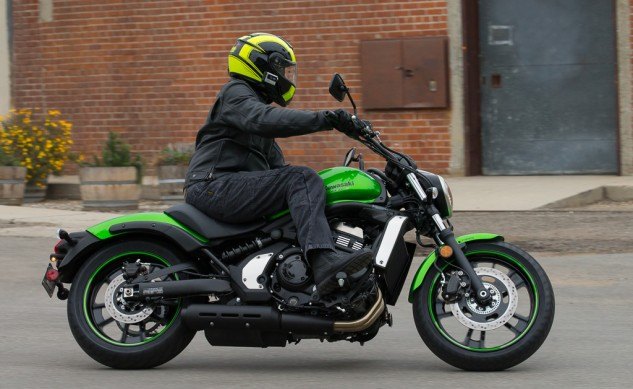 We mentioned the second killer feature of the Prism at the outset of this article: the ability to record voice-over via Bluetooth. Including high-quality narration within the video will be appreciated by more than just vloggers and motojournalists. Depending on the helmet the microphone is mounted in, the audio can be quite clear with the Sena 20S’ noise-canceling capacity neutralizing much of the wind noise. Intercom conversations can also be recorded, although Sena states that the sound quality is reduced from Ultra HD Audio mode to Normal Audio Mode. We mentioned the second killer feature of the Prism at the outset of this article: the ability to record voice-over via Bluetooth. Including high-quality narration within the video will be appreciated by more than just vloggers and motojournalists. Depending on the helmet the microphone is mounted in, the audio can be quite clear with the Sena 20S’ noise-canceling capacity neutralizing much of the wind noise. Intercom conversations can also be recorded, although Sena states that the sound quality is reduced from Ultra HD Audio mode to Normal Audio Mode.One final benefit of the Bluetooth audio bears mentioning: When any action camera is positioned directly in the wind blast, its built-in mic mostly records overmodulated wind noise with some engine sounds in the background. Even with the microphone sensitivity set to low and with the Prism in the waterproof housing, the wind noise can make the audio almost useless. Since the helmet microphone attached to the Sena 20S has noise-cancelling technology, the environmental audio is much clearer – though at a lower volume. Some around-town engine sounds are lost, but any highway riding using a 20S has a much nicer sound due to the lessened turbulence. 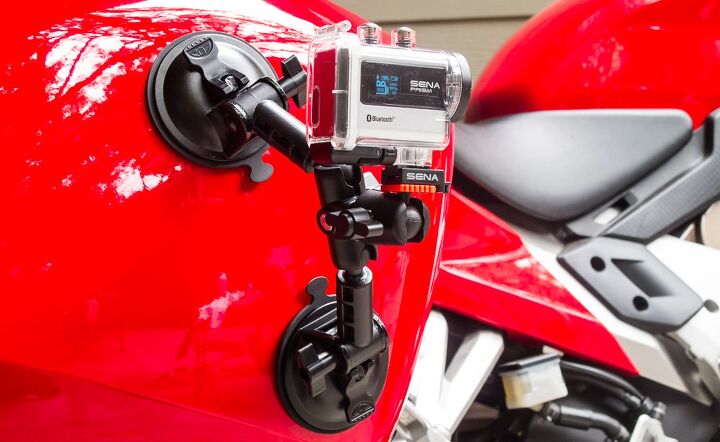 Multiple attachment points help to minimize video-ruining vibration. Multiple attachment points help to minimize video-ruining vibration.Mount Up Thanks to Apple, opening the packaging of an electronic device has become an event, and the Sena Prism is no different. The box top lifts upward to reveal the Prism, a waterproof case, and a smaller box with mounts and instructions. Lifting the plastic tray out of the box reveals an inner section with a dizzying array of mounting options all packaged in individual plastic bags. While we may have ordered the Prism for its connectivity options, we were thrilled by the mounting choices that were included as part of the standard package as opposed to extra-cost items that we probably wouldn’t have ordered for a while – thus limiting the flexibility of the system. The mounts consist of stick-on flat surface mounts with two different camera mounts (one ball-leveling and one adjustable on the vertical axis – as typically seen on helmet top mounts), a handlebar mount, suction cup mount with single- or dual-cup mounting options, a goggle strap mount, and a slick helmet side mount. Since most people will start with a helmet mount, we’ll do the same. 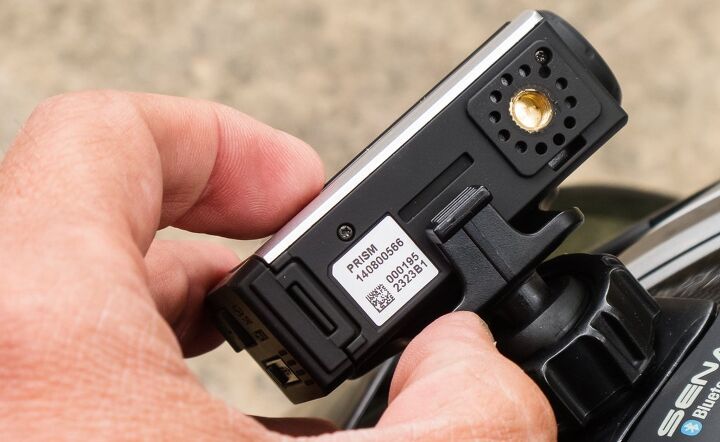 The helmet clamp mount’s simplicity belies its sturdiness. The helmet clamp mount’s simplicity belies its sturdiness.The Sena helmet clamp mount uses a metal plate that slips between the helmet’s padding and its shell, much in the way helmet communicators do. The exterior plate then is clamped to the shell via a pair of allen bolts. Thanks to the compact nature of the Prism’s design which places the small side of its box-shaped design forward, the helmet mount is remarkably compact. To avoid placing any more weight than necessary on the rider’s helmet, the water-resistant camera doesn’t require the protective waterproof accessory housing. Consequently, inserting the camera in the mount is as simple as inserting the bottom tab in the camera body and pressing the Prism towards the helmet until the camera slots into place with a solid click. On the camera’s initial installation the ball-adjuster on the mount simplifies the setting of the camera for the proper level for the helmet and the rider’s position on the motorcycle. Unfortunately, this is a trial-and-error process since there is no way to preview the Prism’s orientation. The handlebar mount naturally attaches itself to the component from which it gets its name, but if we stopped there, we’d be selling the mount short. In our time with the Prism, we also attached the camera to frame rails, passenger peg mounts, turnsignal stalks, and passenger grab rails. Unfortunately, the ball head’s limited adjustment range could not accommodate some places that the bracket could attach to a bike, preventing the camera from being oriented in a way to get the shot. The handlebar mount requires the use of the waterproof housing. 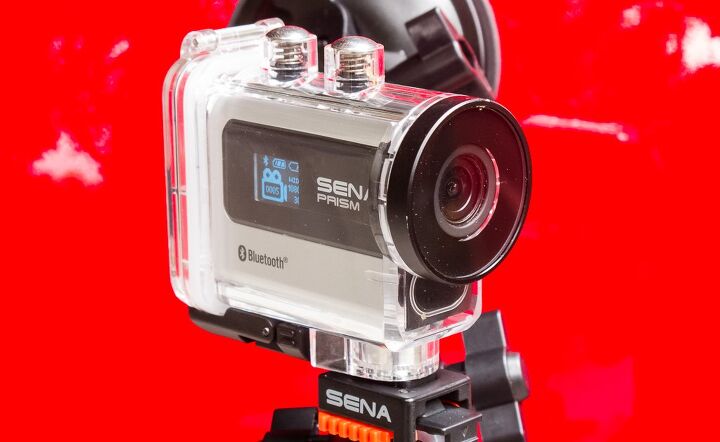 With the exception of the helmet clamp mount, all of the mounting methods require the use of the Prism’s waterproof housing. Since the camera is often mounted in places that are vulnerable to road debris, we’d much rather replace a $40 housing than the entire camera when an errant rock impacts the housing’s lens cover. With the exception of the helmet clamp mount, all of the mounting methods require the use of the Prism’s waterproof housing. Since the camera is often mounted in places that are vulnerable to road debris, we’d much rather replace a $40 housing than the entire camera when an errant rock impacts the housing’s lens cover.The Prism comes with a nice variation on the popular action-camera suction-cup mount. First, the suction cup itself is sticky, helping it to adhere to the flat surface before the lever is thrown to create the vacuum. This material allows for the mount to attach itself firmly to surfaces that weren’t perfectly smooth, expanding the mounting options. Our initial concerns about the suction cup’s propensity for picking up sand or other debris that could damage a motorcycle’s paint were negated by the cup’s ability to be washed in cold water. The dirt floats away, leaving a clean mounting surface. A nice feature of the suction-cup mount is that it has the option of using one or two cups to secure and stabilize the camera. We frequently found that the dual-cup setup was less prone to image-distorting vibration that distorts the image. A wire retaining strap can be attached to the mount to keep the Prism from tumbling away should the mount fail, but don’t use it in a situation where it might allow the camera and mount to tangle with the drive chain or wheels. 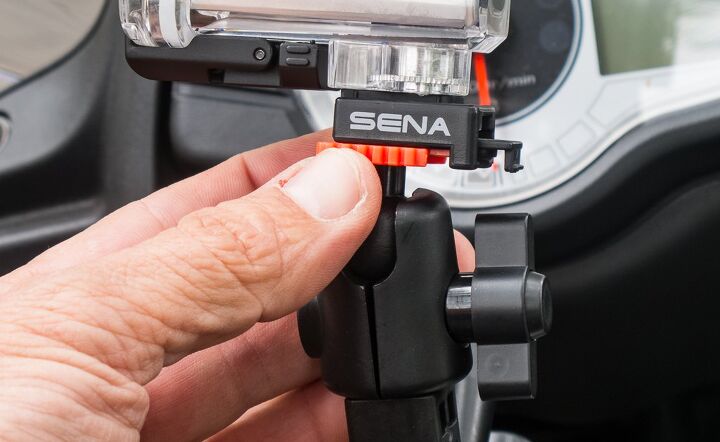 The Prism’s Quick Release Mount (QRM) uses a two-stage locking mechanism: Slide the shoe into the QRM until it clicks then slide the red latch forward to lock the camera in place. The Prism’s Quick Release Mount (QRM) uses a two-stage locking mechanism: Slide the shoe into the QRM until it clicks then slide the red latch forward to lock the camera in place.Out on the Road All these cool features don’t amount to much until you put them into action out on the road, and we’ve been doing it for a couple months. All of our recent road test videos have included on-bike footage captured with both our Prism and our hired gun videographers’ GoPros. We defy you to tell the difference. In side-by-side viewing, with both cameras set to the same resolution and frame rate, the quality is virtually identical. We’ll leave it to the pixel peepers to find places to critique the Prism’s video quality. The only features we wish the Prism had are the smartphone preview to assist in positioning the camera and built-in active image stabilization. The first, Sena has promised is being worked on, and with the Prism’s ability to have its firmware upgraded, we expect it to happen. The second, since it is hardware-based, will have to wait for future cameras, but we hope it happens. In more practical terms, the remote sleep/wake feature is worth its weight in gold since the small form factor of the Prism limits its battery capacity (as with most action cameras). Sena claims around 2.5 hours of recording time (that is if the up to 32 gig Micro SD card has enough remaining space). In practical use, two hours of constant use was about all we could get. Still, the Prism’s battery costs just $19 and is removable, making it easy to swap them out. Also, the camera will still work when an external battery is plugged in via a USB cable. The waterproof case even includes a “Skeleton Backdoor” which allows charging while the camera is in the case. The level of moisture protection is reduced from 40m (131 ft.) in depth to water resistant. The Prism’s 1080p HD video coupled with the audio capability of a Sena 20S (or other brand) Bluetooth headset makes a compelling case for the camera. When considering all the accessory mounts that are included, the Prism’s $399 retail price seems about right for a premium unit and is placed between the GoPro Hero 4 and 3+. Although both GoPro models have higher frame rates at 1080p and higher resolution still-photo capability, they come with minimal mounting capabilities. The GoPro accessory mounts are more difficult to use and, in our opinion, inferior to the Prism’s ball mount. (A short note about the GoPro mounting system: Some mounting situations necessitate multiple arms that are attached to each other via joints with captive nuts. This system requires that the joints be fully disassembled to include the correct arm combination and is unnecessarily fidgety). Also, the GoPro has no wireless voice-over options. Since we use the Prism constantly when testing bikes, we hope Sena updates the firmware to include a smartphone preview soon. We highly recommend the Sena Prism. However, you might want to wait a week or so before rushing out to buy one. While we were testing the Prism, a box containing Sena’s yet-to-be-released 10C arrived on our doorstep. Stay tuned for our review of this all-in-one Bluetooth communication and camera system about the same time the 10C becomes available to consumers in the beginning of May. 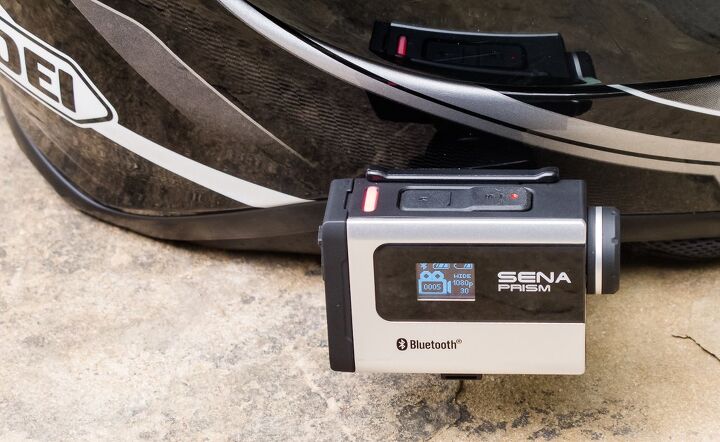 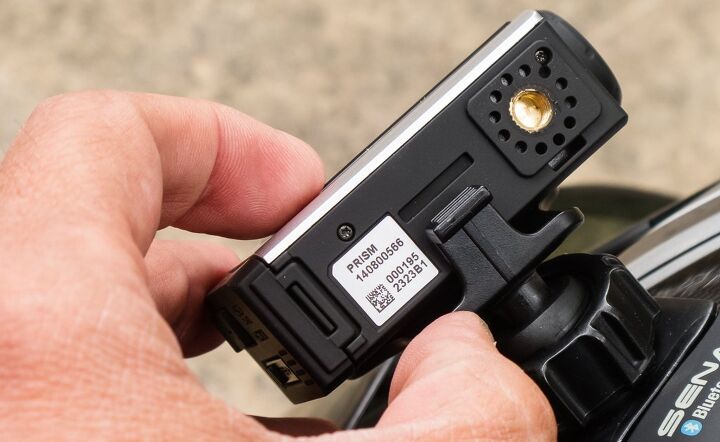 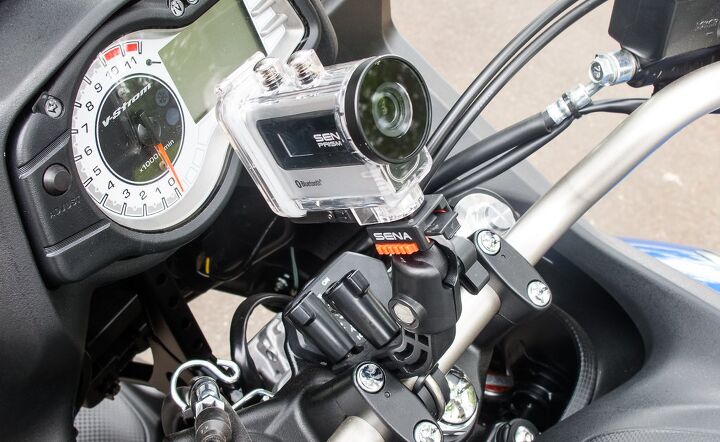 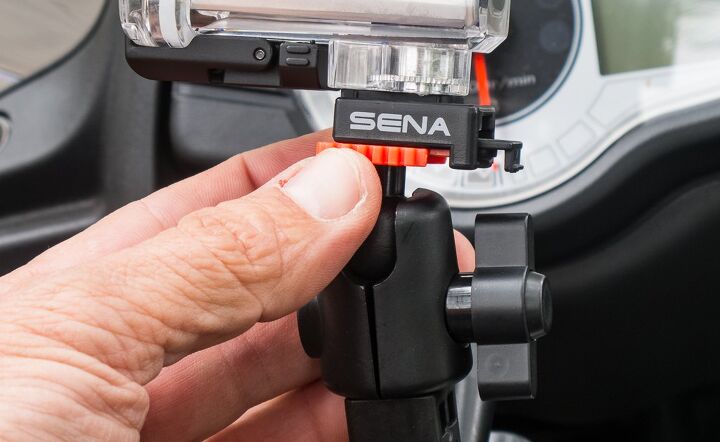 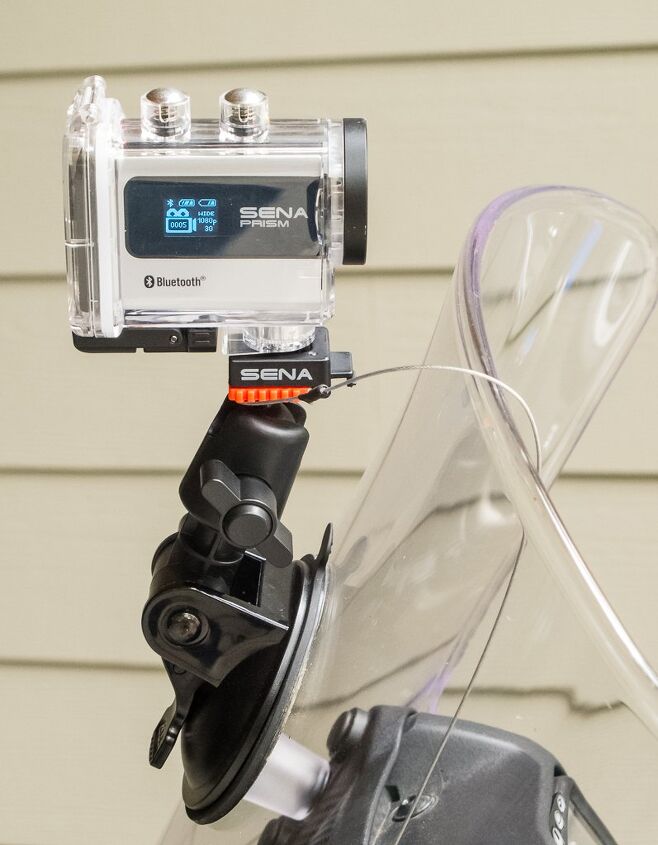 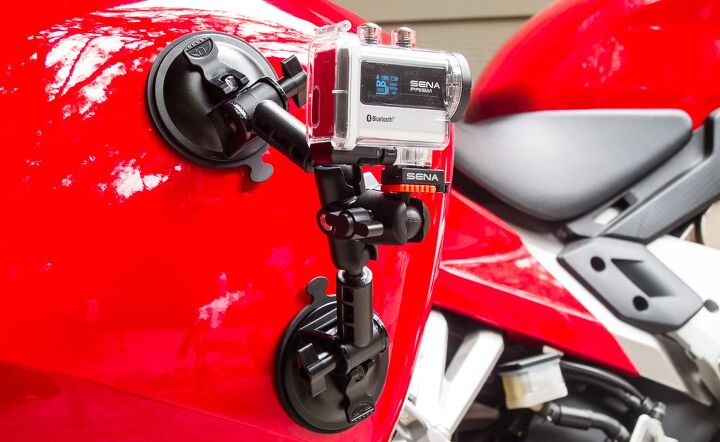 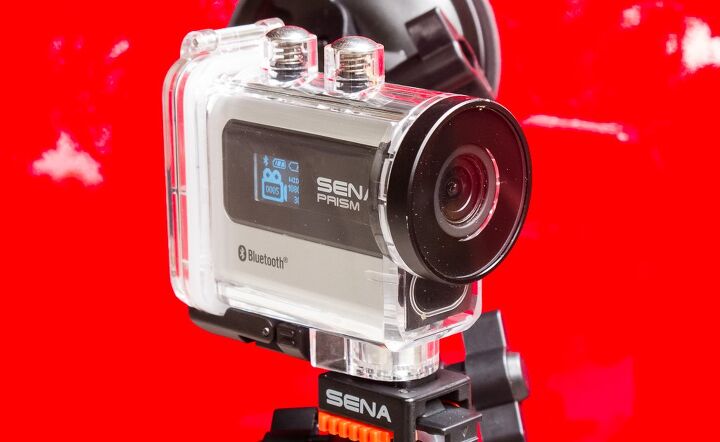 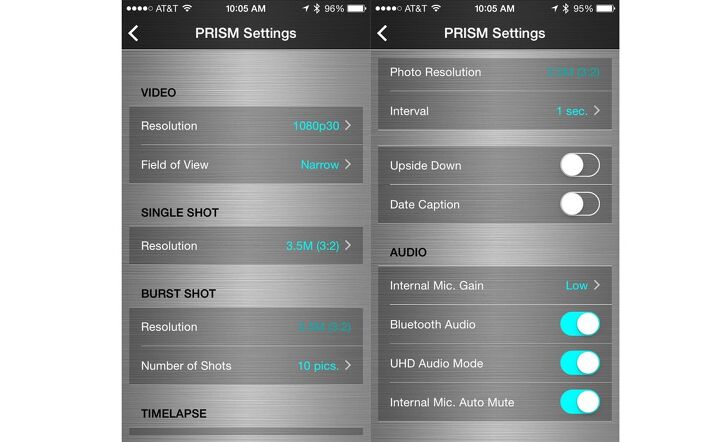 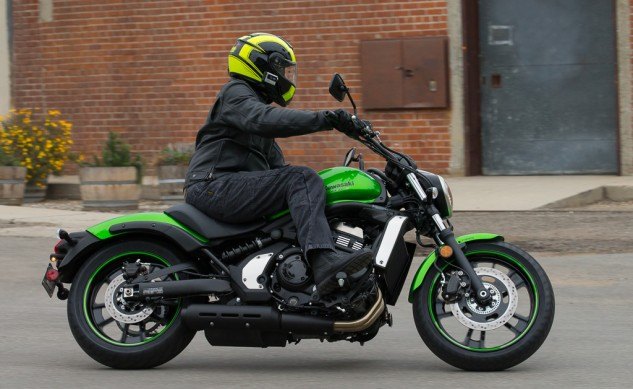 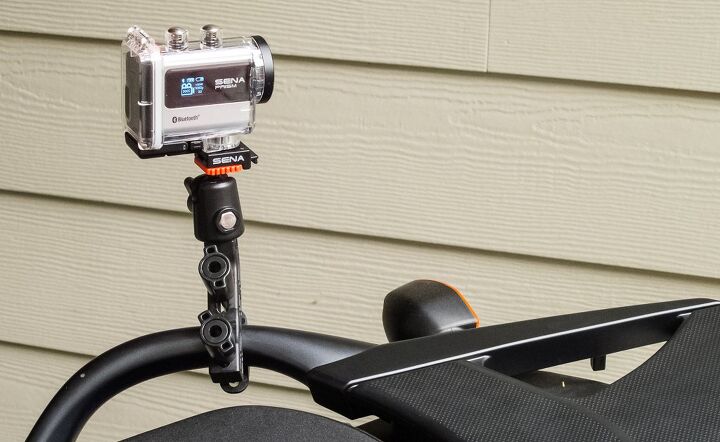 Sena Prism Camera Review + Video appeared first on Motorcycle.com. Sena Prism Camera Review + Video appeared first on Motorcycle.com.Click here for full story...
__________________________________________________
I'm a bot. I don't need no stinkin' signature... |
|
|

|
 |
 Similar Threads
Similar Threads
|
||||
| Thread | Thread Starter | Forum | Replies | Last Post |
| [webbikeworld.com] - Sena Prism Review | Ninjette Newsbot | Motorcycling News | 0 | December 23rd, 2014 08:40 AM |
| [motorcycle-usa.com] - Sena Prism Bluetooth Action Camera Available | Ninjette Newsbot | Motorcycling News | 0 | November 19th, 2014 08:21 AM |
| [webbikeworld.com] - Sena Prism Action Camera Preview | Ninjette Newsbot | Motorcycling News | 0 | July 28th, 2014 12:50 PM |
| [motorcycle-usa.com] - Sena Bluetooth GoPro Camera Pack Peek | Ninjette Newsbot | Motorcycling News | 0 | February 27th, 2014 05:40 PM |
| [motorcycle-usa.com] - Sena Bluetooth GoPro Camera Accessory Peek | Ninjette Newsbot | Motorcycling News | 0 | February 26th, 2014 05:50 PM |
| Thread Tools | |
|
|